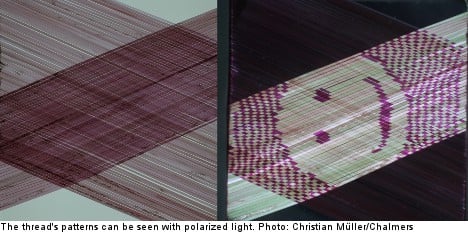“I don’t mind being called a nerd, but I prefer the term Intellectual Bad-Ass,” says Emil Johansson, a man who has earned himself the adoration of a global fan base.
Why?
This self-proclaimed geek has taken on the mammoth task of tracing and documenting every branch of the 900 character strong family tree of JRR Tolkien’s iconic set of stories.
On top of this, he just added a timeline and map to the online project last week, giving viewers what he deems to be a more “complete experience”.
These functions, which are also available on the Android App that was released in March, allow Tolkien enthusiasts a clearer insight into character movements and event settings.
“The beauty of this project is the fact that it is something which can never be completed,” a perpetually passionate Johansson tells The Local, adding that he has been working on the project for seven years so far.
“I’m a creative person, and with the statistics of the characters in the books to work on too, this is certainly something I can see myself working on for a very, very long time.”
The student has certainly found a niche that has caught the eye of people from all parts of the globe, operating from his base at Chalmers University of Technology in Gothenburg.
News of his progress has intrigued people in the US, Australia and beyond.
“My weirdest piece of fan mail came from a hotel in the US – they wanted a PDF version of the family tree to hang on the walls of their hotel rooms,” he recalls.
“Of course, I couldn’t provide it to them just yet, as to do so would give a sense of finality to the project, when there is still plenty to discover and plenty of mistakes to rectify.”
Johansson, who grew up in Jönköping, read The Hobbit for the first time in Swedish at the age of 11 and says he fell in love with the magic long before he watched the blockbuster films.
“I have been fortunate enough to have read the books before seeing the first film. This is very important for me, and if I hadn’t done so I don’t think this project would exist,” he says.
“Reading the books allowed me to create my own sense of these magical worlds, untouched by the movies. When I saw the movies they enhanced and brought my visions to life, but at the same time I would recommend anyone to read the books before seeing the films. If you watch the movies first, you can’t create a world of your own.”
When Johansson began working on the family tree in 2005, armed with only a one metre squared area of paper, he realized soon that working on paper was limiting.
“I worked on the project by hand for a long time, and I thought I had it all finished, but when I realized that there were several errors, and that there was a lot more to discover, I decided to take the project online,” he explains.
“I’ve never had any proper programming training, so it was really a case of just Googling around and seeing what I could find out. But this was all part of the excitement for me.
“I love taking on new challenges, and this combination of my love for Lord of the Rings and my curiosity to find out more on the programming side is what keeps me motivated every day.”
Despite his love for the high fantasy novels, Johansson admits he would be “terrified” to bump into JRR Tolkien, author of the books that spawned a whole new language – Elvish – were he still alive.
“I’d be honoured to meet Tolkien, obviously, but at the same time I’d be terrified to know what he thought of my site,” he says.
“He found it so curious that people got so absorbed in his novels. He never understood how people could devote so much time to the legend and history surrounding the stories, so I don’t think he’d understand me.”
Johansson’s next goal is to continue expanding his statistics and numbers about the novels, after entering a large quantity of them into his own database.
“I want to continue expanding the numbers side of things, as I’m always looking at new ways to keep the challenge fresh and exciting for me. I also plan to make a chronological version of the tree, too,” he explains.
Asked if he thinks the magic of the trilogy had gone to his head, the 21-year old remains defiant.
“I think I am certainly still an 11-year old boy at heart, and I take pride in that. If you can keep a childish sense of creativity and curiosity then I think you’re bound to be much happier and content in your life.”
So far, Johansson has managed to track down the heretical whereabouts of 914 of the 900+ characters that Tolkien spawned.
Take a look at Emil Johansson’s LOTR project for yourself at the link below.
Joe Lynskey



 Please whitelist us to continue reading.
Please whitelist us to continue reading.
Member comments